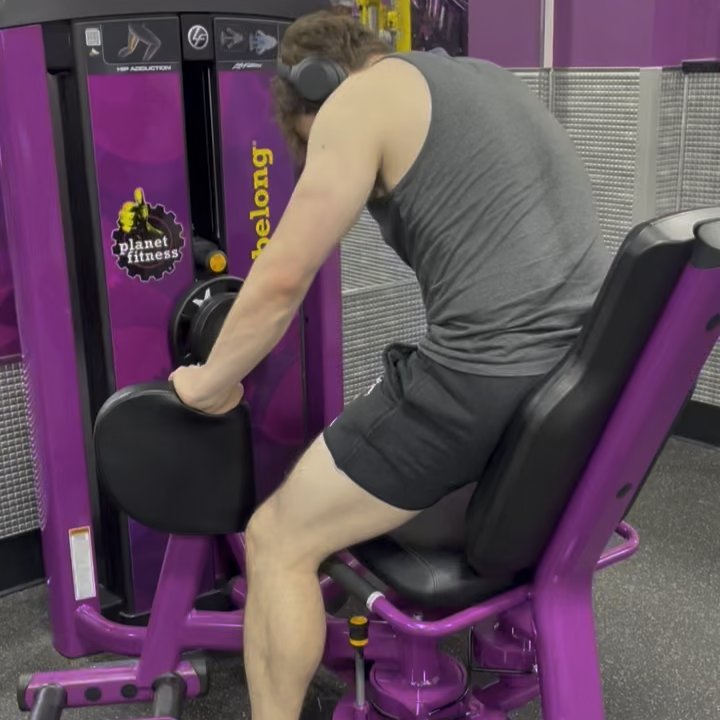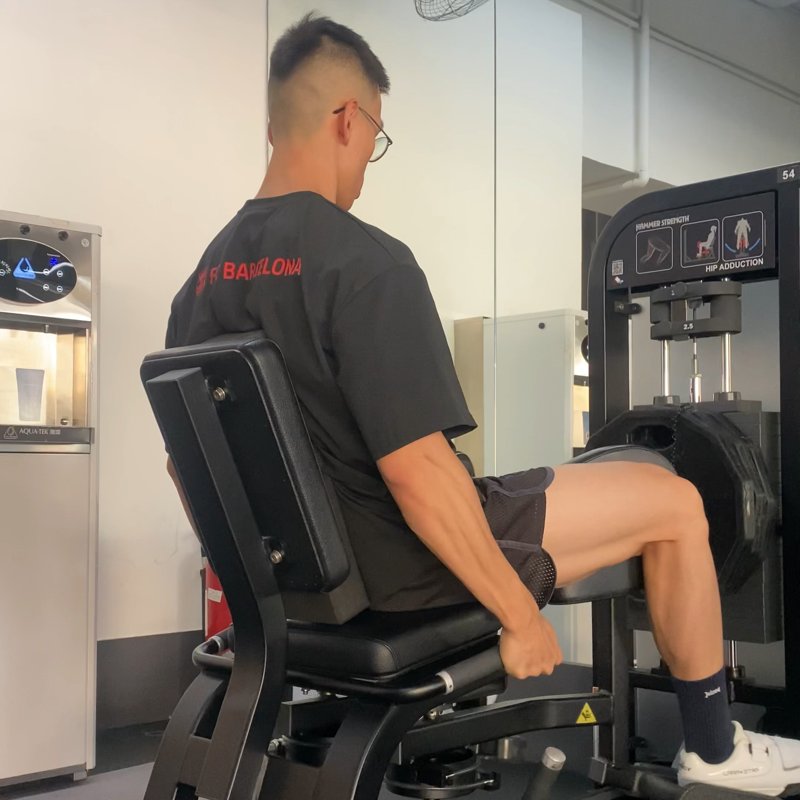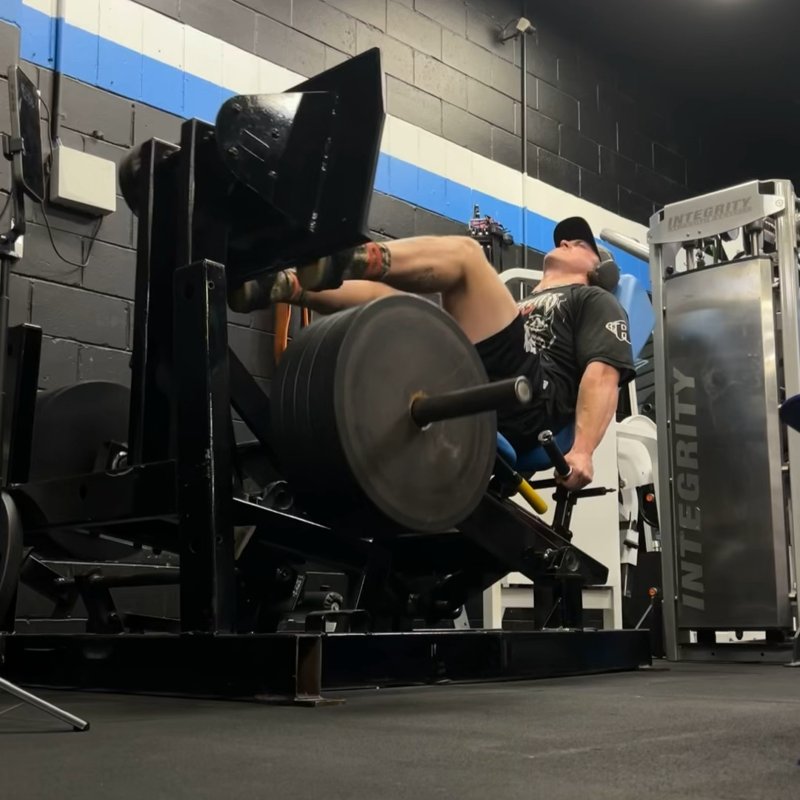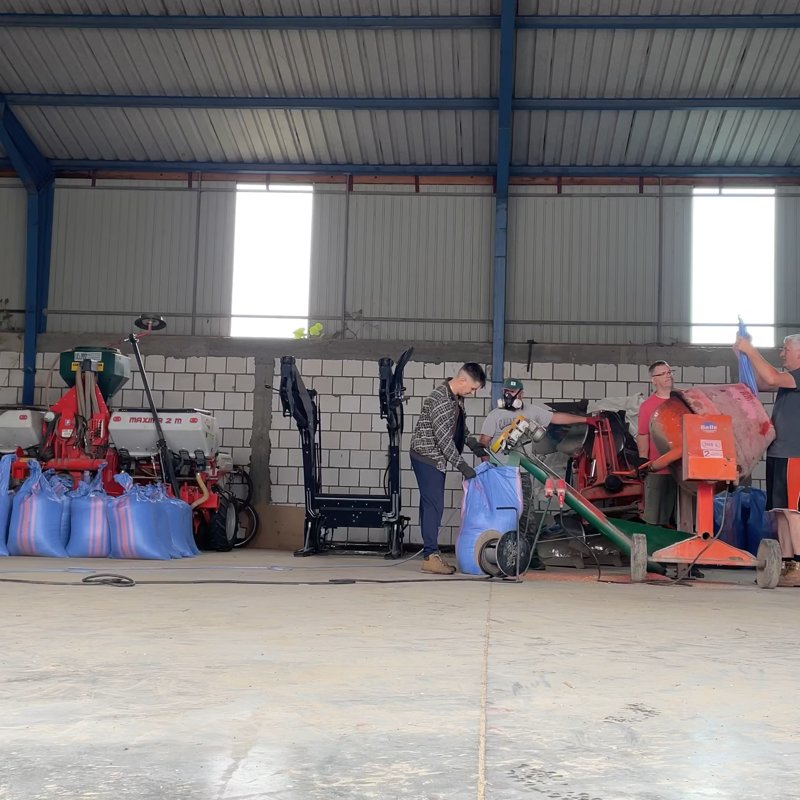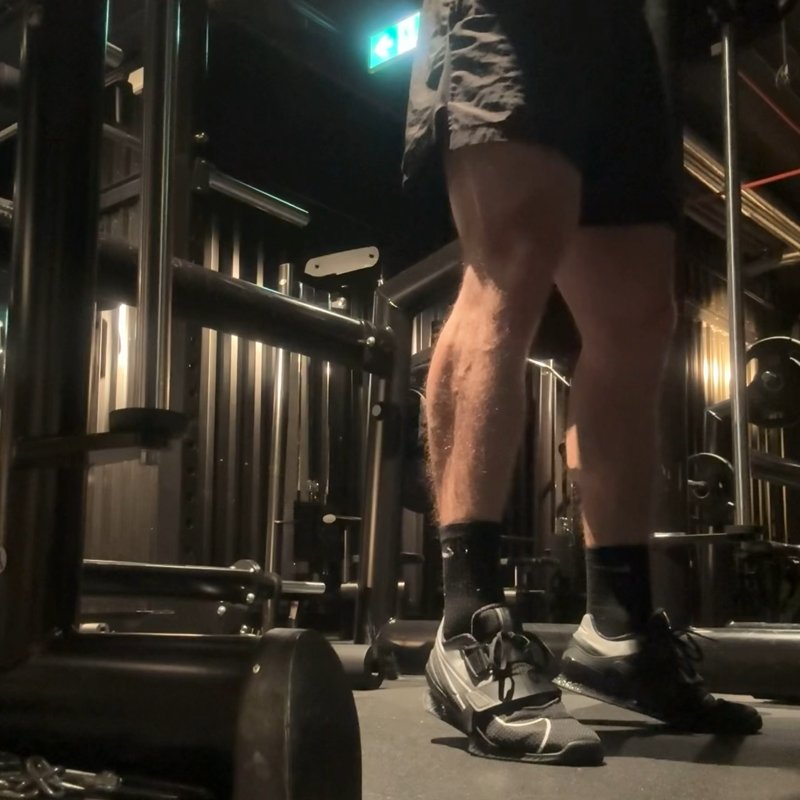Seated Hip Adduction: The Ultimate Guide
The Seated Hip Adduction is a machine-based isolation exercise that targets the hip adductor muscles (inner thighs) by bringing the legs inward against resistance, helping to strengthen these often neglected muscles for improved hip stability and lower body function.
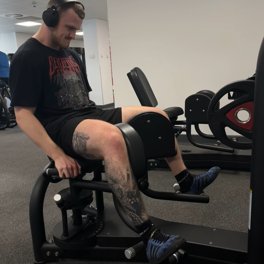
Quick Facts
Key Benefit
Inner thigh strength and hip stability
Primary Muscles
Hip Adductors
Secondary Muscles
Abdominals
Equipment
machine
Difficulty
Beginner
Type
Strength
In This Guide
Ready to master the Seated Hip Adduction?
Track your progress, see improvements over time, and build strength consistently.
Download GravitusThe Seated Hip Adduction is a specialized isolation exercise that targets the often-neglected adductor muscles of the inner thigh. These muscles, which include the adductor longus, adductor brevis, adductor magnus, gracilis, and pectineus, are responsible for moving the legs inward toward the body's midline—a motion known as hip adduction. While the adductors might not receive as much attention as the quadriceps or hamstrings in typical training programs, they play crucial roles in hip stability, proper movement mechanics, and overall lower body function. Weakness in these muscles can contribute to issues ranging from knee pain to groin strains, particularly in activities requiring lateral movement. The seated hip adduction machine provides a controlled environment to isolate and strengthen these muscles effectively. By sitting in a stable position with pads against the inner thighs, you can focus entirely on the adduction movement without compensating with other muscle groups. Whether your goal is to improve hip stability, enhance athletic performance in sports requiring lateral movement, address muscle imbalances, or simply develop more balanced lower body strength, the seated hip adduction exercise is a valuable addition to your training routine.
Benefits of Seated Hip Adduction
The seated hip adduction exercise offers several important benefits for both athletic performance and everyday function.
Inner Thigh Strength
Directly targets and strengthens the adductor muscle group, which is often undertrained in conventional exercise programs.
Hip Stability
Strengthens muscles crucial for lateral stability of the hip joint, potentially reducing risk of falls and improving balance.
Groin Injury Prevention
Building strength in the adductors may help reduce susceptibility to groin strains, a common injury in sports involving rapid direction changes.
Knee Alignment
Strong adductors help maintain proper knee tracking during movements like squats and walking, potentially reducing knee pain and injury risk.
Balanced Lower Body Development
Complements exercises that target the outer hip (abductors) to create balanced muscle development around the hip joint.
Proper Form & Technique
Starting Position
- Adjust the seat height so that your knees are aligned with the pivot point of the machine.
- Sit with your back flat against the backrest, maintaining good posture.
- Place the inside of your thighs against the machine's padded levers.
- Position your feet on the footrests of the machine.
- Adjust the starting width of the leg pads so your legs are comfortably spread apart.
- Grasp the handles or sides of the seat for stability.
- Ensure your spine is neutral and your core is slightly engaged.
Movement
- Take a deep breath and engage your core slightly to stabilize your pelvis.
- Exhale as you slowly bring your legs together, pushing against the resistance pads.
- Focus on initiating the movement from your inner thighs, not your knees.
- Continue bringing your legs toward each other until they're as close together as the machine allows.
- Hold the contracted position briefly (1-2 seconds) to maximize muscle engagement.
- Inhale as you slowly allow your legs to return to the starting position, controlling the resistance throughout the movement.
- Avoid letting the weight stack touch down between repetitions to maintain constant tension on the muscles.
- Repeat for the desired number of repetitions, maintaining control throughout the set.
Key Form Tips
Muscle Focus
Concentrate on using your inner thigh muscles rather than pushing with your knees or feet.
Range of Motion
Work through a full range of motion that feels comfortable without forcing your legs beyond their natural flexibility.
Control
Avoid using momentum or jerking the weight - slow, controlled movement maximizes muscle recruitment.
Spine Position
Keep your lower back pressed against the backrest throughout the movement to prevent arching.
Breathing
Establish a consistent breathing pattern - exhale during exertion (bringing legs together), inhale during the return phase.
Muscles Worked
Primary Muscles
- hip adductors: The adductor muscle group includes the adductor magnus (the largest of the adductors, running along the inner thigh from the pelvis to the femur), adductor longus (located on the upper, inner thigh), adductor brevis (a smaller, deeper adductor muscle), and other muscles that work together to bring the thigh toward the midline of the body.
- Gracilis: A long, thin muscle running down the inner thigh that assists with both hip adduction and knee flexion.
Secondary Muscles
- Pectineus: A flat, quadrangular muscle located at the top of the inner thigh that aids in hip flexion and adduction.
- Obturator Externus: A deep muscle that helps stabilize the hip joint during adduction movements.
- abdominals: Work isometrically to stabilize the pelvis during the movement.
- Pelvic Floor Muscles: Engage during controlled adduction movements, providing additional core stability.
Common Mistakes and How to Fix Them
Using Momentum
Jerking or swinging the legs uses momentum rather than muscle strength. Fix this by slowing down the movement and focusing on control throughout the entire range of motion, especially during the return phase.
Lifting Hips Off Seat
Raising hips during the movement indicates the weight is too heavy and reduces effectiveness. Ensure your hips remain level and firmly planted on the seat throughout the exercise, reducing the weight if necessary.
Incomplete Range of Motion
Not bringing legs close enough together or not returning to a sufficient starting width reduces effectiveness. Work within a comfortable range that allows you to maintain control and proper form, feeling the target muscles working throughout.
Incorrect Breathing
Holding breath or inconsistent breathing patterns can increase blood pressure and reduce stability. Establish a rhythmic breathing pattern, exhaling during the effort (bringing legs together) and inhaling during the return.
Poor Posture
Slouching or arching the back reduces exercise effectiveness and increases injury risk. Maintain a neutral spine with your back against the support pad, avoiding any excessive arching or rounding of the lower back.
Seated Hip Adduction Variations
Machine Variations
-

Single-Leg Hip Adduction
Perform the exercise one leg at a time to address strength imbalances between sides.
-

Pulse Hip Adduction
At the contracted position (legs together), perform small pulse movements to increase time under tension.
-

Isometric Hip Adduction Hold
Hold the contracted position for an extended time (10-30 seconds) to build endurance and static strength.
Alternative Exercises
-

Stability Ball Squeeze
Place a stability ball or medicine ball between your knees and squeeze, providing a similar movement pattern without machine dependency.
-

Side-Lying Hip Adduction
Performed while lying on your side, lifting your bottom leg toward the ceiling, which engages the adductors with bodyweight resistance.
-
Cable Hip Adduction
Using a cable machine with an ankle cuff attachment to perform adduction while standing, which adds a functional stability component.
Frequently Asked Questions
For most individuals, training the hip adductors 2-3 times per week with at least 48 hours between sessions is optimal. These stabilizing muscles benefit from adequate recovery time between targeted work. If you're performing other lower body exercises that work the inner thighs indirectly (such as squats or lunges), you might limit direct hip adduction work to 1-2 dedicated sessions per week. For rehabilitation purposes or when addressing specific imbalances, more frequent training with lighter loads (3-4 times weekly) might be appropriate. Remember that consistency is more important than frequency - regular, progressive training over time will yield the best results.
The seated hip adduction exercise strengthens and tones the adductor muscles of the inner thighs, but it cannot spot-reduce fat in this area. Fat loss occurs throughout the body in a genetically predetermined pattern when you maintain a caloric deficit through diet and overall exercise. While strengthening these muscles can improve the appearance of the area by creating more muscle tone, combining hip adduction with a comprehensive fitness program including cardiovascular exercise and proper nutrition is necessary for reducing body fat. For those concerned with inner thigh appearance, this exercise is valuable as part of a complete approach, not as a standalone solution.
The seated hip adduction machine can benefit many people with knee issues by strengthening the adductor muscles, which help maintain proper knee tracking and stability. Strong adductors can improve movement patterns and potentially reduce stress on the knee joint during daily activities. However, if you have an acute knee injury or experience pain during the exercise, consult with a healthcare professional before continuing. The machine's design keeps the knee in a relatively stable, neutral position throughout the movement, making it generally safer than many functional exercises for those with knee concerns. Start with light resistance and perfect form, especially if you're using this exercise as part of rehabilitation.
Both exercises work the adductor muscles but in very different ways. Seated hip adduction isolates the inner thighs through a controlled, single-joint movement, allowing targeted strengthening with minimal involvement from other muscle groups. This makes it excellent for beginners, rehabilitation, or specifically addressing adductor weakness. Sumo squats (wide-stance squats) work the adductors as synergists in a compound, multi-joint movement that also heavily engages the quadriceps, glutes, and hamstrings. This makes them more functional and metabolically demanding, but less targeted for the adductors specifically. Ideally, a complete training program would include both isolation exercises like seated hip adduction for specific muscle development and compound movements like sumo squats for functional strength and greater overall training efficiency.
Video Demonstrations

Log in to watch video demonstrations
Login to Watch3 video demonstrations available
Find more video demonstrations in the Gravitus app
Track your progress with Gravitus
Download Gravitus to log your workouts, track your progress, and join a community of fitness enthusiasts.

Helpful Resources
One Rep Max Calculator
Find your one rep max for any exercise without maximal testing. Essential for developing effective strength training programs.
Calculate 1RMWorkout Programs
Follow structured workout programs created by fitness professionals to maximize your strength and muscle gains.
View Programs